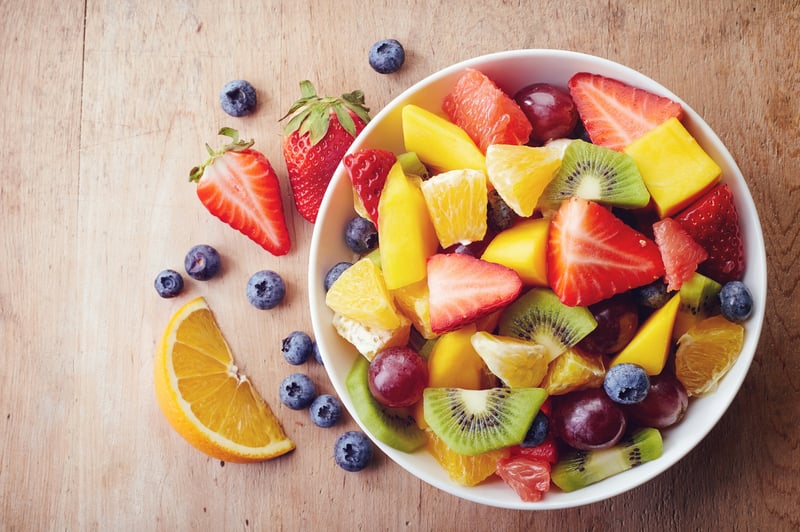Debunking the Myth: Avoid Fruit Due to High Sugar

When it comes to nutrition, there is so much information. Eat this, don’t eat that. Fats make you fat; carbs make you fat; sugar makes you fat and sick… With all of this information, it’s hard to know what’s right, what’s wrong, and what will get you to your weight-loss goal—not just fast but for the long haul.
That being said, there is nutrition advice that virtually everyone agrees on. Let’s look at sugar, for example. You won’t find one expert who recommends eating more sugar. Most urge folks to reduce sugar consumption, and others are militant about cutting it out altogether.
So, where does that leave us when it comes to sugar in fruit, nature’s sweet treat. A medium banana, for instance, contains 14 grams of sugar. An apple can contain 19 grams of sugar. A cup of chopped mango can leave you with a whopping 23 grams of sugar.
It’s obvious, right? Sugar is bad, so these fruits must be bad too—especially if you are following a low-carb diet. It’s time to eliminate them!
Wait, not so fast!
The naturally-occurring sugar in fruit is only a small piece of the overall picture, and when you put it into proper context, that’s drastically different than the refined sugar that is typically added to heavily processed foods. In other words, instead of looking at a single ingredient (i.e., sugar), we have to evaluate the package that it comes in.
Defining Sugar
No matter what your source of sugar, it is made up of a combination of fructose and glucose, and you’ll find the same molecular structure. It’s worth noting that fructose and glucose are metabolized differently.
On one hand, fructose is metabolized almost exclusively in the liver. While this has some benefit (it doesn’t affect blood glucose or insulin levels), there are potential issues (such as conversion to triglycerides/fat) with consuming an excessive amount of fructose.
Glucose, on the other hand, affects blood sugar levels, of course, and along those lines, it requires insulin for its metabolism. While there is quite a bit of variation and thus some exceptions, fruits tend to be 40 to 55 percent fructose. Sucrose or table sugar is 50/50.
Why sugar in fruit is different?
As mentioned above, the BIG difference is in how the sugar is packaged. While added sugars are empty calories that provide no additional nutritional value (besides energy) whatsoever, and they are most commonly found in highly processed foods. On the other hand, fruits are packaged with much more than naturally-occurring sugar, including water, vitamins, minerals, antioxidants (e.g., phytonutrients), and fiber. Fruits are nutrient-dense (the opposite of cakes and candies). Fiber is vital in that it also slows down digestion, so you don’t get the insulin spike and subsequent crash caused by candies, cakes, and similar sweets.
Let’s take a look at some common fruits and how they add up with not only sugar but fiber and nutrients:

While experts clearly don’t recommend that we eat more sweets, according to the U.S. Department of Agriculture, women over the age of 40 should eat 1.5 cups of fruits per day, and everyone else should eat two cups a day. Yet, Americans typically eat less than that. So, experts do recommend we eat more fruit.
While you can’t have your cake and eat it too, you can have your sugar in fruit as part of a healthy overall nutrition plan.






